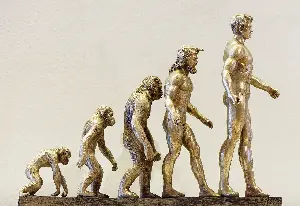Understanding Different Levels of Understanding
Published:
 In our daily interactions and communications, it is surprisingly common to operate under the assumption that others share the same foundational level of knowledge or understanding as we do. This unspoken expectation often feels natural, as we tend to project our own experiences and knowledge onto those around us without consciously realizing it. However, this can create challenges, particularly when explaining a concept, idea, or piece of information to someone who does not grasp it as quickly as we expect. In such moments, we may find ourselves confused or even frustrated, questioning whether the difficulty lies in their ability to understand or in our ability to convey the information effectively.
In our daily interactions and communications, it is surprisingly common to operate under the assumption that others share the same foundational level of knowledge or understanding as we do. This unspoken expectation often feels natural, as we tend to project our own experiences and knowledge onto those around us without consciously realizing it. However, this can create challenges, particularly when explaining a concept, idea, or piece of information to someone who does not grasp it as quickly as we expect. In such moments, we may find ourselves confused or even frustrated, questioning whether the difficulty lies in their ability to understand or in our ability to convey the information effectively.
The underlying issue often stems from the flawed assumption of a universal baseline of knowledge—a belief that everyone has been exposed to similar experiences, education, or ways of thinking. This assumption can lead to misunderstandings, as it disregards the diverse backgrounds, perspectives, and cognitive frameworks that shape how individuals process information. When we fail to account for these differences, we risk miscommunicating or oversimplifying concepts, unintentionally creating barriers to effective understanding.
Acknowledging this disparity requires a shift in mindset. Effective communication is not about simply transmitting information but about ensuring that the message is received and understood in a meaningful way. This involves adapting our approach, being patient, and asking clarifying questions to gauge the other person’s perspective. By doing so, we create space for a more inclusive exchange of ideas, recognizing that knowledge is not a fixed, uniform commodity but a dynamic interplay shaped by unique experiences.
Ultimately, the path to better understanding lies in empathy and flexibility. By embracing the diversity of thought and background in our interactions, we can move beyond the limits of our own assumptions, fostering deeper connections and more meaningful conversations. This shift not only improves the way we share ideas but also enriches our relationships and broadens our perspectives, reminding us that communication is a skill that evolves through awareness and practice.
The Assumption Trap: The assumption that everyone possesses the same level of knowledge on a particular subject is a common cognitive pitfall. It stems from our own understanding of the topic and the assumption that others share a similar comprehension.
Diverse Levels of Understanding: Each individual brings a unique set of experiences, background knowledge, and perspectives to the table. Consequently, their understanding of a given topic may vary widely. Recognizing and respecting these differences is crucial for effective communication.
The Blame Game: When someone doesn’t grasp what we are explaining, the immediate reaction may be to question either their comprehension or our ability to convey information. This inclination to assign blame can hinder constructive communication and collaboration.
The Importance of Clarity: Clear and concise communication becomes paramount when dealing with diverse levels of understanding. Breaking down complex ideas into simpler components, offering examples, and encouraging questions can enhance comprehension for everyone involved.
Empathy in Communication: Empathy plays a pivotal role in navigating diverse levels of understanding. Instead of assuming a shared knowledge base, taking the time to gauge the other person’s familiarity with the topic fosters a more empathetic and inclusive dialogue.
Bridging the Gap: Bridging the knowledge gap requires patience and a willingness to adapt our communication style. It involves recognizing when additional context or explanations are needed and being open to questions without judgment.
Two-Way Learning: Communication is a two-way street. Embracing the idea that both the speaker and the listener can learn from each other’s perspectives helps create a more collaborative and enriching exchange of ideas.
Embracing Lifelong Learning: Cultivating a mindset of lifelong learning acknowledges that knowledge is a dynamic and evolving process. Embracing this concept allows us to approach interactions with curiosity and a willingness to expand our understanding.
In conclusion, understanding that not everyone shares the same level of knowledge is a crucial aspect of effective communication. By recognizing and respecting diverse perspectives, fostering empathy, and embracing a mindset of continuous learning, we can bridge the knowledge gap and create more inclusive and enriching interactions.